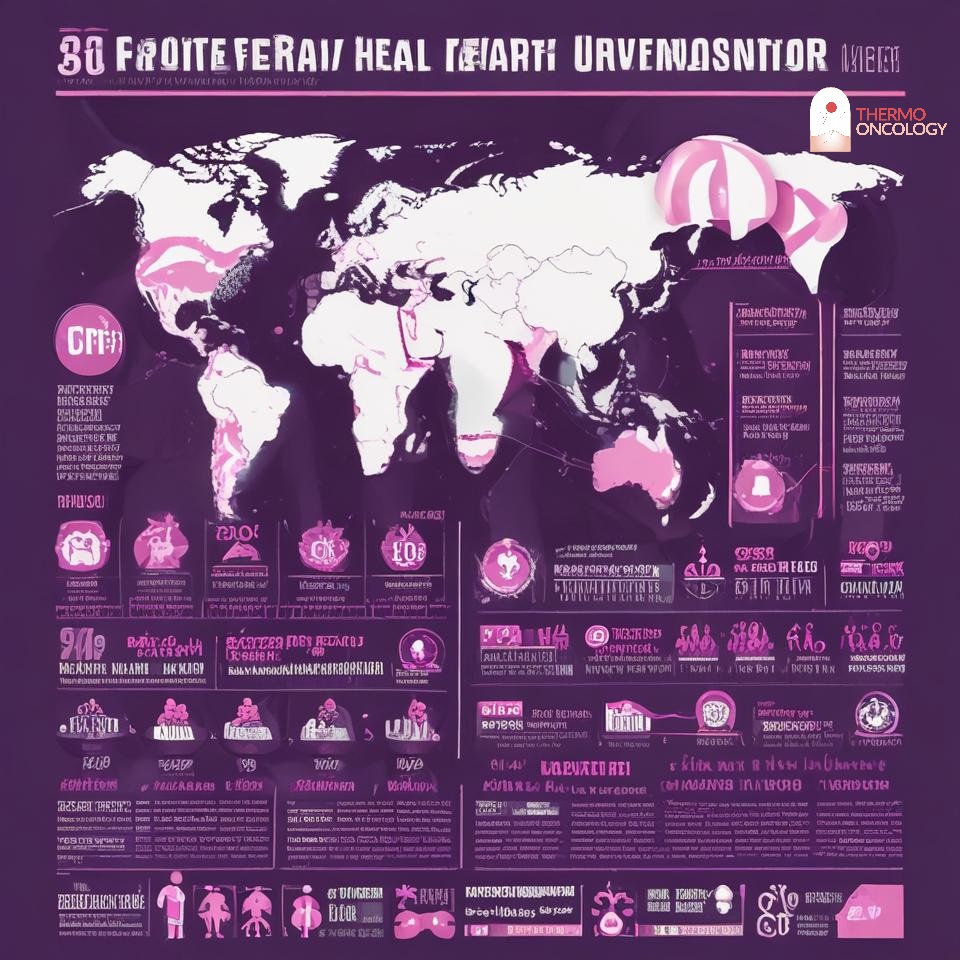𝐃𝐞𝐚𝐫 𝐓𝐡𝐞𝐫𝐦𝐨𝐧𝐜𝐨𝐥𝐨𝐠𝐲 readers,
The World Health Organization (WHO) has recently published the latest global data on 36 cancers in 185 countries incidence and mortality. As a Thermoncology community, we believe this information is crucial for understanding the current state of breast cancer worldwide. Here are the key highlights:
𝐈𝐧𝐜𝐢𝐝𝐞𝐧𝐜𝐞 𝐚𝐧𝐝 𝐌𝐨𝐫𝐭𝐚𝐥𝐢𝐭𝐲
- In 2022, female breast cancer was the second most common cancer globally, with an estimated 2.3 million new cases, accounting for 11.6% of all cancer cases.
- It was also the fourth leading cause of cancer deaths worldwide, with 666,000 deaths, making up 6.9% of all cancer deaths.
- Among women, breast cancer is the most commonly diagnosed cancer and the leading cause of cancer deaths globally and in 157 countries for incidence and 112 countries for mortality.
𝐆𝐞𝐨𝐠𝐫𝐚𝐩𝐡𝐢𝐜 𝐕𝐚𝐫𝐢𝐚𝐭𝐢𝐨𝐧𝐬
- Incidence rates are highest in transitioned countries like North America, Northern Europe, and Australia/New Zealand, with France having the highest rates.
- Transitioning countries, especially in South America, Africa, and Asia, have rapidly increasing incidence and mortality rates.
- There is a significant disparity in mortality rates between transitioned and transitioning countries. Transitioned countries have lower mortality rates despite higher incidence, reflecting better health infrastructure and early detection programs. Many sub-Saharan African countries have high mortality rates due to weak health systems and late presentation of cases.
𝐑𝐢𝐬𝐤 𝐅𝐚𝐜𝐭𝐨𝐫𝐬 𝐚𝐧𝐝 𝐓𝐫𝐞𝐧𝐝𝐬
- Higher incidence in transitioned countries is linked to reproductive and lifestyle factors such as early menarche, late menopause, fewer children, less breastfeeding, hormone replacement therapy, oral contraceptives, alcohol intake, excess body weight, and physical inactivity.
- In transitioning countries, the rise in breast cancer incidence and mortality is associated with changing reproductive behaviors, lifestyle factors, and limited access to early detection and treatment services.
𝐏𝐫𝐞𝐯𝐞𝐧𝐭𝐢𝐨𝐧 𝐚𝐧𝐝 𝐂𝐨𝐧𝐭𝐫𝐨𝐥
- Primary prevention strategies focus on reducing excess body weight, alcohol consumption, and promoting breastfeeding.
- The focus of breast cancer control is on early diagnosis/screening and timely, comprehensive cancer management.
- The WHO recommends organized, population-based mammography screening every two years for women aged 50-69 in well-resourced settings. In limited-resource settings, the focus is on early diagnosis and effective treatment of symptomatic cases.
- The Global Breast Cancer Initiative, established by WHO in 2021, aims to reduce breast cancer mortality by 2.5% per year, potentially saving 2.5 million lives over two decades, through health promotion, early detection, and comprehensive breast cancer management.
𝐖𝐞 𝐡𝐨𝐩𝐞 𝐭𝐡𝐢𝐬 𝐮𝐩𝐝𝐚𝐭𝐞𝐝 𝐢𝐧𝐟𝐨𝐫𝐦𝐚𝐭𝐢𝐨𝐧 𝐨𝐧 𝐠𝐥𝐨𝐛𝐚𝐥 𝐛𝐫𝐞𝐚𝐬𝐭 𝐜𝐚𝐧𝐜𝐞𝐫 𝐬𝐭𝐚𝐭𝐢𝐬𝐭𝐢𝐜𝐬 𝐚𝐧𝐝 𝐩𝐫𝐞𝐯𝐞𝐧𝐭𝐢𝐨𝐧 𝐬𝐭𝐫𝐚𝐭𝐞𝐠𝐢𝐞𝐬 𝐩𝐫𝐨𝐯𝐢𝐝𝐞𝐬 𝐯𝐚𝐥𝐮𝐚𝐛𝐥𝐞 𝐢𝐧𝐬𝐢𝐠𝐡𝐭𝐬 𝐟𝐨𝐫 𝐨𝐮𝐫 𝐜𝐨𝐦𝐦𝐮𝐧𝐢𝐭𝐲. 𝐒𝐭𝐚𝐲 𝐭𝐮𝐧𝐞𝐝 𝐟𝐨𝐫 𝐦𝐨𝐫𝐞 𝐮𝐩𝐝𝐚𝐭𝐞𝐬 𝐨𝐧 𝐚𝐝𝐯𝐚𝐧𝐜𝐞𝐦𝐞𝐧𝐭𝐬 𝐢𝐧 𝐨𝐧𝐜𝐨𝐥𝐨𝐠𝐲.





